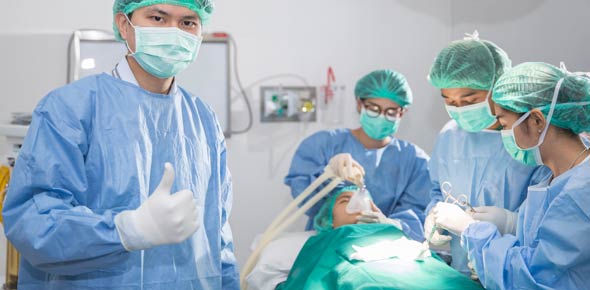Tissue death is called
Another name for the kneecap is
Epistaxis can be defined as
Oil glands of the skin are called
The lower jawbone is the
The artery at the back of the knee is the
The purpose of the iris is to
Ischemic can be defined as
The suffix lysis means
The highly specialized blood cell whose function is oxygen...
The nasal cavity is divided into two portions by the
The number of pairs of ribs is
The longest bone in the body is the
Nulli is a prefix that means
Platelets are essential for
False is indicated by the prefix
A slender, rodlike bone that is located at the base of the neck and...
The medial bone of the forearm, which is located on the small-finger...
A ganglion is a
The branch of the external iliac artery that is located in the thigh...
The nerve that carries visual impulses to the brain is the
A drop is denoted by the abbreviation
The bone in the axial skeleton that does not articulate with any other...
Blood gas analysis is called
The sternocleidomastoid muscle is located
The outermost covering of the brain and spinal cord is the
A large opening at the base of the skull through which the spinal cord...
Adduction means
Which artery supplies the head and neck?
The thick, fan-shaped muscle that lies on the anterior chest is the
The triangular muscle of the shoulder that abducts the arm is the
Kerato refers to
The bone that forms the posterior portion of the skull is the
Why would an aspirated foreign body be more likely to enter the right...
An infection of the bone is
The area of the brain that controls the respiratory center is the
The abbreviation ung refers to
The spleen filters
The sturcture that connects the middle ear and the throat, allowing...
In the normal adult, the average number of leukocytes per cubic...
The brain contains four fluid-filled spaces called the
Which of the following is not an auditory ossicle?
The epiphyses are the
The white outer layer of the eyeball is the
Proximal is a term that indicates a point
Which radiographic procedure has the ability to make images in...
The bone that fits into the acetabulum, forming a joint, is the
The vocal cords are located in the
The circle of Willis is located
Mixing of incompatible bloods may result in
The gastrocnemius is the chief muscle of the
How many cervical vertebrae are there?
The nucleus pulposus is the
The secretion of excessive sweat is also known as
The atrioventricular (A-V) node causes
The winding, cone-shaped tube of the inner ear is the
The left eye is indicated by the following letters
A large superficial vein in the lower extremity, which begins in the...
Cross-matching of blood
A transparent structure that permits the eye to focus rays to form an...
The bone located in the neck between the mandible and the larynx,...
A cystocele is
The veins of the head and neck are drained by the
The larger, weight-bearing bone of the lower leg is the
A rounded protuberance found at a point of articulation with another...
The function of the trachea is to
Which of the abdominal muscles originates at the pubic bone and ends...
The serous membrane that covers the heart is the
The periosteum is
The structure that is seen form the outside as the colored portion of...
The muscles important in respiration are
A jelly-like substance in the eye/s posterior cavity is called
The great sensory nerve of the face and head is the
The largest part of the brain is the
Tiny red or purple spots on the skin appearing as a result of...
A connective tissue band that holds bones together is called
The conjunctiva is the
The superior and inferior mesenteric arteries supply the
Which arteries supply the heart?
Which of the following structures transmits sound vibrations to the...
The bones of the palm of the hand are referred to as
The cranial nerve that contains special sense fibers for hearing as...
Adnexa refers to
The vein in the bend of the elbow that is commonly used as a site for...
The fonral, temporal, parietal, and occipital lobes are divisions of...
The bone that is shaped like a butterfly and forms the anterior...
Cerebrospinal fluid circulates freely in the
The absence of a normal body opening, duct, or canal in called
The membranes that line closed cavities within the body are called
A differential count provides an estimate of
The part of the brain responsible for maintenance of balance and...
The upper , flaring portion of hipbone is the
The lungs are covered in a serous membranous sac called the
The two bones that form the side walls and the roof of the cranium are...
One of the principal muscles of the pelvic floor is the
The number of pairs of spinal nerves is
Circulation that is established through an anastomosis between two...
The passageway for foods and liquids into the digestive system, and...
The vein that drains the veins of the chest wall and empties into the...
The adult vetebral column has
















